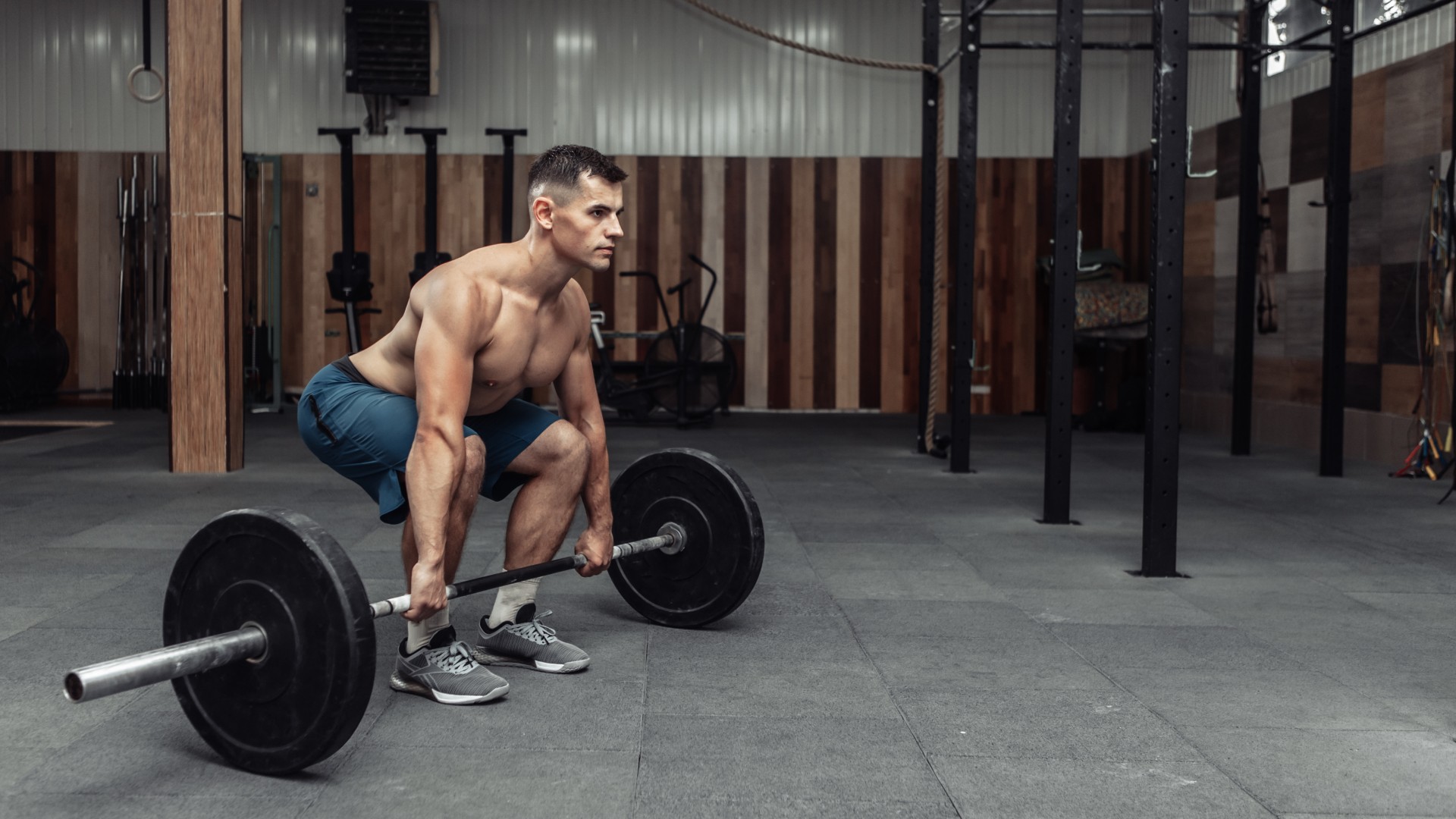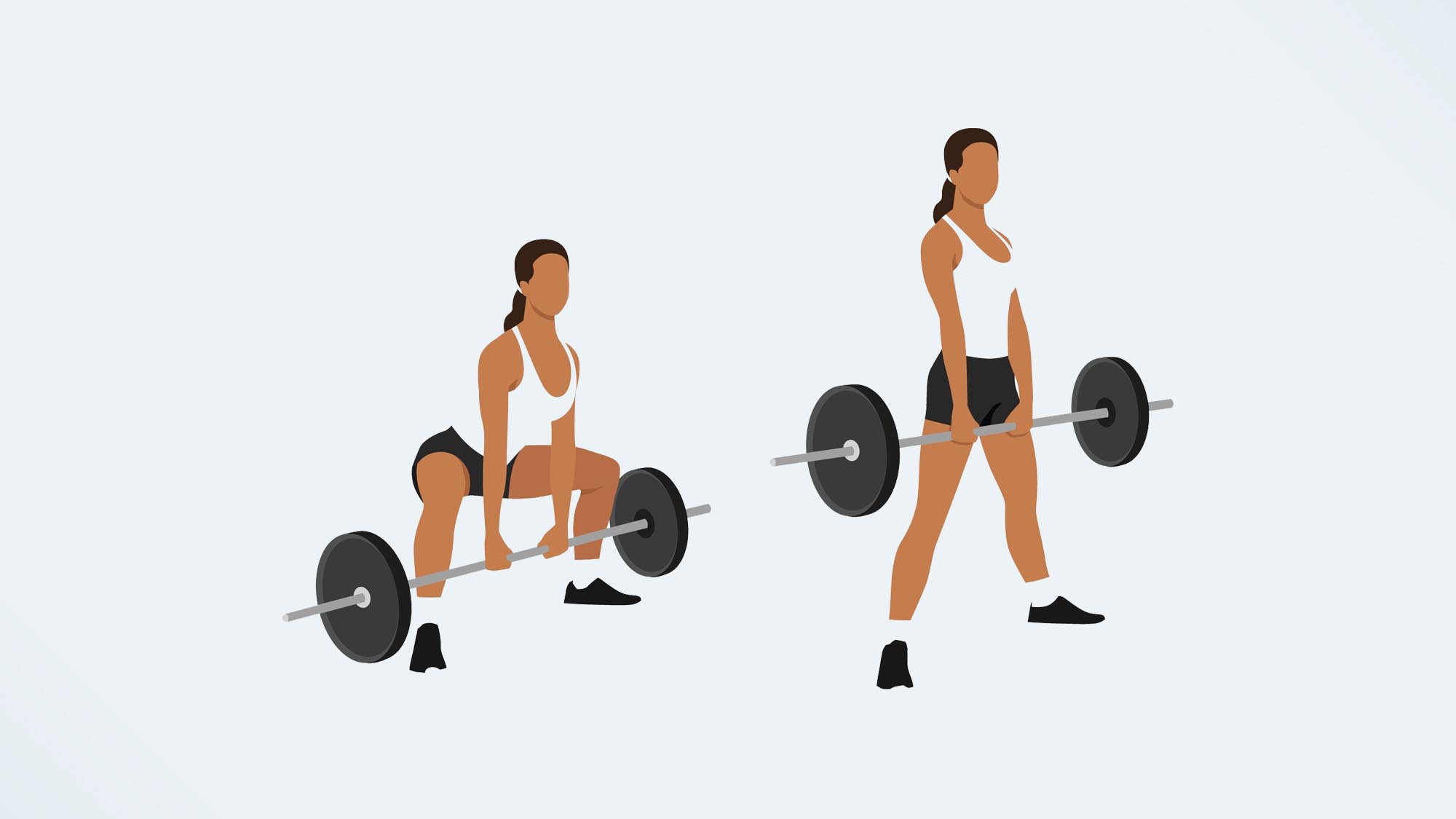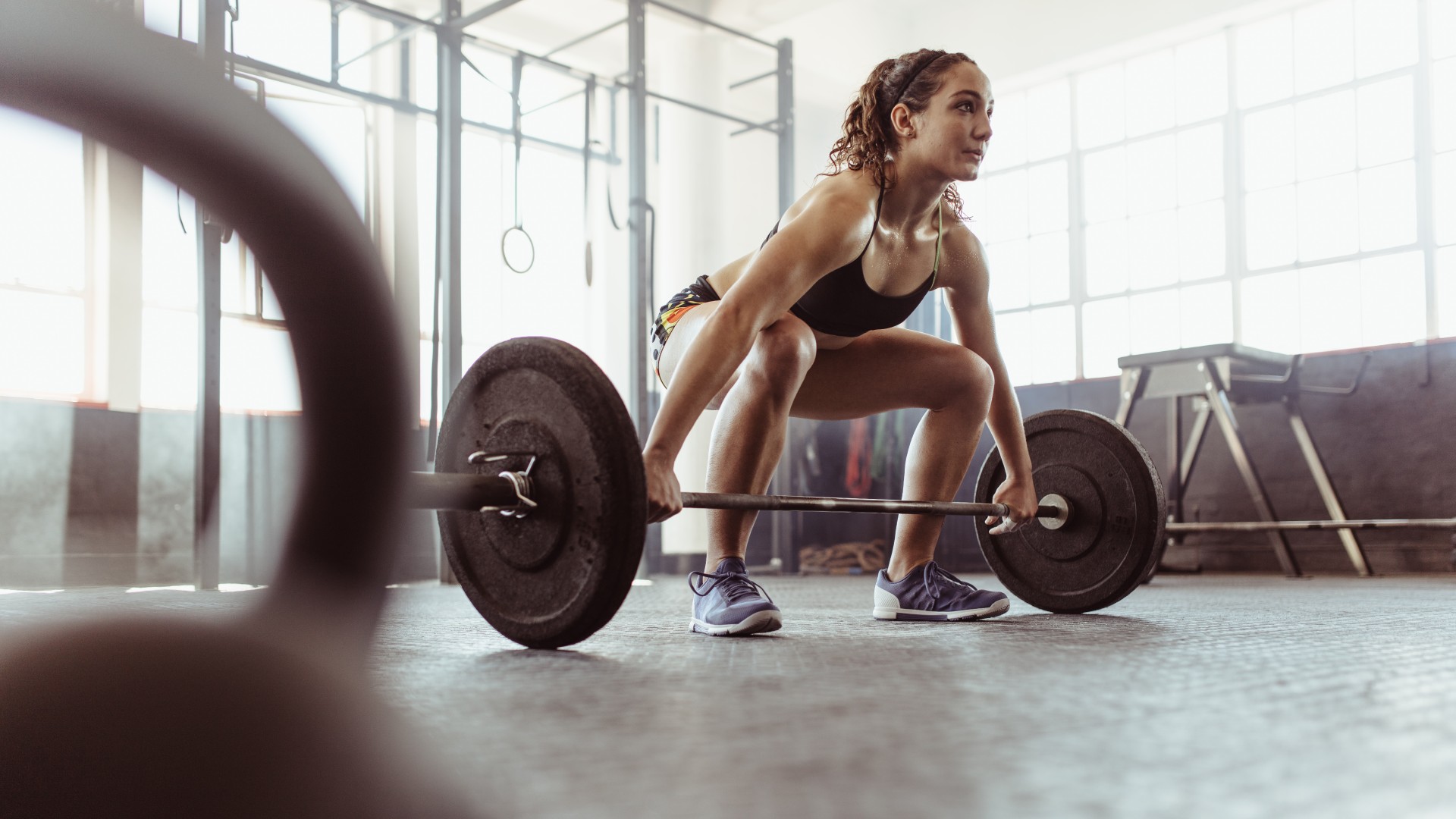
Deadlifts are one of the best exercises for hitting every major muscle group and building full-body strength, power and muscle. When you hit the gym, you want to know your exercises are efficient and effective. How much more effective can you get than the deadlift?
But if you’re bored of traditional deadlifts, try these three variations. As a trainer, I believe the deadlift is the best compound exercise for building strength and muscle, and there are many ways you can spice them up to target and emphasize muscle groups differently.
Below, I cover three of my favorite deadlift variations, how to do them and the benefits of adding deadlifts to your exercise routine.
Deadlift: Benefits
First, we’ll tap into the isolation versus compound exercise debate; isolation exercises like hamstring curls or leg extensions hone in on one muscle group (the hamstrings and quads, respectively), whereas compound moves like deadlifts target multiple. I don’t know a strength exercise that is more efficient than a deadlift at working your whole body.
Deadlifts are also functional, which means they mimic natural movement patterns like bending down to pick something up; if you execute a deadlift with good biomechanics, your daily activities should become easier, too.
You can use dumbbells, kettlebells, or resistance bands, but at Tom’s Guide, we recommend loading with barbells if your goal is to lift heavy or close to your one rep max. Dumbbells and other free weights or bands are more useful for beginners learning the exercise and ironing out potential muscular imbalances by leveling up both sides of the body.
Here's how to deadlift with perfect form, including a breakdown of set-up and ways to modify the exercise for your ability.
Get instant access to breaking news, the hottest reviews, great deals and helpful tips.
3 deadlift variations to add to your strength program
1. Sumo deadlift

The sumo variation uses a wider foot position so that your hands wrap the bar centrally between your legs using a narrow grip. This simple switch-up targets the quads, glutes and adductors (inner thighs) more, strengthens the hips and boosts flexibility.
How:
- Stand with your feet slightly wider than shoulder-width apart. Turn your toes outward to around 45 degrees
- Place your barbell in front of you and hinge forward at the hips while maintaining a soft knee bend
- Grip the bar shoulder-width apart using an overhand or mixed grip
- Draw your shoulders back and down, engage your core and squeeze your glutes, lats and shoulders
- Maintain a flat back and lift your chest
- Drive through your heels, then explosively push the floor away and stand up. Extend your hips fully without arching your back
- Lower the bar to the floor with control.
2. Snatch grip deadlift

The snatch grip can feel uncomfortable because your arm position is much wider than usual — you’ll see the grip used during powerlifting competitions and CrossFit classes. It helps strengthen the initial setup and pull used during snatches, like back, hand and hip positioning. The snatch deadlift also builds grip strength and emphasizes your hamstrings.
How:
- Start with the bar in front of you and your feet slightly wider than hip-width apart. Spread your toes and press your feet down, toes turned slightly outward
- Send your hips back, softly bend your knees and grip the bar wider than your legs using an overhand grip with thumbs wrapped
- Maintain a flat back and proud chest. Brace your stomach
- Draw your shoulders and hips down and squeeze your lats, abs and glutes
- Gently pull the bar to remove any slack without lifting it from the floor
- On the exhale, stand explosively with the bar
- Extend your legs and hips at the top, then lower back down with control.
Ensure you can fully wrap your hands on the bar — a guideline is to position your hands a few inches from the ends of the bar. As you lower the bar, focus on tracking it down your legs as you rebend the knees and lower the hips.
3. Hex bar deadlift

The positioning of the hex bar deadlift allows your center of gravity to be closer, stressing the lower back less. Your hands will sit neutral on either side of your hips, and the positioning of the lift is more vertical. The move can feel more like a squat than traditional deadlifts but works the same muscle groups.
How:
- Stand inside the hex bar with your feet hip-width apart
- Bend your knees and keep your back straight
- Grip the bar on either side of you, brace your core and set your shoulders back and down
- Press through your feet and send your hips back
- Lift your chest and drive through your heels to stand
- Squeeze your glutes, pause and extend your hips without arching your back
- Re-bend the knees and lower the bar to the floor
- Reset before each rep or touch and go if you prefer.
What muscles do deadlifts work?

Your posterior chain muscles run down the back of the body, including your back, glutes and hamstrings — all active during deadlifts. The move also strengthens your hip flexors, core and quads and improves forearm strength, grip and hip health.
Although your core muscles act as a key driver while you lift, I encourage squeezing your entire body during setup, including your lats (muscles that run down the sides of your back), abs and glutes, and slightly lifting the bar with your arms first to remove slack. These tips will set you up for success before the lift.
The National Strength and Conditioning Association (NSCA) states that few exercises activate your trunk muscles like the deadlift. The exercise requires full-body engagement, and engaging many motor units and muscle fibers at the same time puts stress on the musculoskeletal system, strengthening the body as it adapts to dealing with the load and improving the brain-muscle connection.
More from Tom's Guide
- I've been teaching weightlifting for years, 3 ways to build strength and muscle using light weights
- I tried 'The World's Easiest Workout,' and it only took 30 minutes, here's what happened
- Forget sit-ups — you only need 3 standing ab exercises, 15 minutes, and 1 kettlebell to build your core

Sam Hopes is a level 3 qualified trainer, a level 2 Reiki practitioner and fitness editor at Tom's Guide. She is also currently undertaking her Yoga For Athletes training course.
Sam has written for various fitness brands and websites over the years and has experience across brands at Future, such as Live Science, Fit&Well, Coach, and T3.
Having coached at fitness studios like F45 and Virgin Active and personal trained, Sam now primarily teaches outdoor bootcamps, bodyweight, calisthenics and kettlebells.
She also coaches mobility and flexibility classes several times a week and believes that true strength comes from a holistic approach to training your body.
Sam has completed two mixed doubles Hyrox competitions in London and the Netherlands and finished her first doubles attempt in 1:11.
